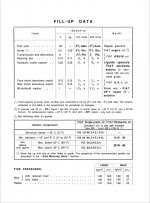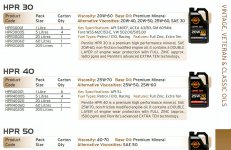My understanding is thus -
Oil viscosity changes with temperature being 'thicker' at lower temperatures and 'thinning' out as temperature rises. It is assessed using an instrument called a viscometer (try saying that after a few drinks) which works by timing the flow of oil through a grid of holes at a particular temperature (usually 100degC). A rating is assigned and ranges from quick transit times ('thin' oils = low number) to slower times ('thick' oils = high numbers). An SAE10 oil will traverse the viscometer faster than an SAE90 oil.
An oil with a W in it just means that its been tested at low (Winter) temperatures and its viscosity graded against the usual temperature test. So a 5W30 oil will be 'thinner' than a 10W30 at low temperatures but both will have the same viscosity at high (engine) temperatures. If your engine is very cold on start up, it is an obvious advantage to be using a 'thinner' oil until it warms up to operating temperature.
The final thing to realise is that oil viscosity does not fall into neat categories but comes in continuous ranges. For example, you may have one that grades at 24 and another at 26 by viscometry, but if the cut point is 25, the first will be categorised as an SAE20 and the latter as an SAE30 even though they perform very similarly.
So which oil should you use? If you live in a cold climate go for, say, a 10W40 whereas if you live in the subtropics like I do, then a 20W40 will be OK. An SAE30 oil is equivalent to any
#W30 oil - it just hasn't been cold tested - and I reckon that the squabble between a
#W30 and a
#W40 isn't worth entering into. If you have a worn engine you may be better off with a 40 rather than a 30, but please don't use a 90 ...
After all of that, I reckon that the most important aspect of this for us is to use a good quality mineral oil and not a semi-synthetic or full synthetic oil. I use Penrite oils because they are Australian made 'for Australian conditions' and I know the Managing Director. He's a good bloke and his company makes good oil. Synthetic oils are for modern engines that run much closer tolerances than our old clunkers.
The manual gives a range depending on ambient start up temperatures and I've attached the relevant page.
Phew - sorry about another lecture - hope all that makes sense,
Chris






